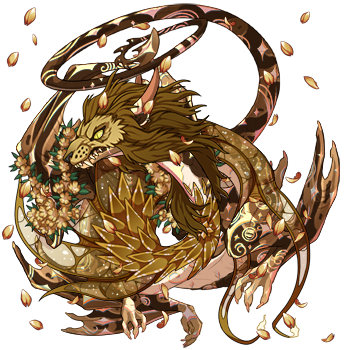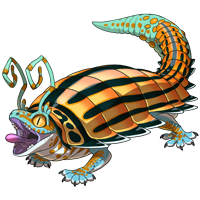

Agnes
(#87139073)
Level 1 Spiral
Click or tap to view this dragon in Predict Morphology.
Energy: 44/50

Expand the dragon details section.
Collapse the dragon details section.
Personal Style
Apparel




Skin

Scene
Measurements
Length
2.97 m
Wingspan
2.92 m
Weight
61.78 kg
Genetics
Sand
Python
Python
Sand
Morph
Morph
Cream
Underbelly
Underbelly
Hatchday
Breed
Eye Type
Level 1 Spiral
EXP: 0 / 245


STR
5
AGI
9
DEF
5
QCK
8
INT
6
VIT
6
MND
6
Biography
Ball Python (Python regius)
The smallest of the African Pythons. These snakes are native to the grasslands and shrublands of West Sub Saharan Africa. They can reach up to 6.0 ft in length, but normally are about 4.0 ft in length. Females are larger and stockier, and prefer a more terrestrial habitat. Males preform more semi-arboreal behaviors than females.
They are known for their defensive strategy, which is to curl up with their head and neck in the middle. They employ this strategy whenever they are stressed or threatened. They also have a generally calm nature, allowing them to easily be handled.
Care
Keep your hatchling ball python in a 10-20 gallon enclosure, but enclosures for adults can be up to 120 gallons. Make sure your snake can fully stretch out in one direction if the please- that should be adequate room. If you give them a larger enclosure, give them plenty of hides such as half-logs or plastic hides so that they can feel safe and secure.
Add a water dish with dechlorinated water (spring water or water treated with water conditioner). Do not use Distilled water, it does not have all the necessary things in it for reptiles. You can buy water conditioner to make your tap water safe for your ball python to drink.
The substrate can be simple- paper towels, blank newspaper, or coconut fiber. Do not use cedar bedding, as it is toxic to snakes.
Make sure to set up a temperature gradient using a under-tank heat mat, or a heat lamp. The warm side of the enclosure should be 85-90 degrees F (30-32 degrees C). The cool side of the enclosure should be 80 degrees F (27 degrees C).
The tank should be humid- depending on where you live will affect how many times you have to spray the enclosure. You should aim for 60% humidity, higher if the ball python has trouble shedding. If your ball python does have trouble shedding, give them a soak in lukewarm water (no soap, and also with safe water for them to drink) and see if they can get the skin off. You may have to peel the skin off yourself, but that should be a last resort. Make sure their shed on their eyecaps and tailtips are removed, as they are the most problematic.
When you first get the ball python, make sure to let them settle in their new cage, and wash your hands thoroughly after touching them, especially if you have other reptiles. If your new snake has a disease or snake mites, this will ensure they don't spread as fast. If you notice any signs of disease such as abnormal waste, wounds, sneezing, excess saliva round the mouth, or dehydration, bring them to a vet!
Do not cohabitate your ball pythons. They can become stressed out, or they could become injured if they fight with one another. The only time they should be together is directly after they hatch and if they are breeding. Please do not breed your Ball Pythons without looking up information and being prepared.
You should feed your ball python once every week (when they are not shedding) as a hatchling-adolescent, and once every 7-10 days as an adult (This can vary depending on your snake). The size of their meal should be the same size as the thickest part of their body. If you can, please feed frozen-thawed, as it is less stressful to the animal, and there is no risk of the prey item harming the snake. Rodents can kill a snake, so be cautious. Your snake can go off feed for month during colder months, so do not panic! If you are worried, take your snake to the vet.
Click or tap a food type to individually feed this dragon only. The other dragons in your lair will not have their energy replenished.
Feed this dragon Insects.
Feed this dragon Meat.
This dragon doesn't eat Seafood.
This dragon doesn't eat Plants.
Exalting Agnes to the service of the Lightweaver will remove them from your lair forever. They will leave behind a small sum of riches that they have accumulated. This action is irreversible.
Do you wish to continue?
- Names must be longer than 2 characters.
- Names must be no longer than 16 characters.
- Names can only contain letters.
- Names must be no longer than 16 characters.
- Names can only contain letters.












